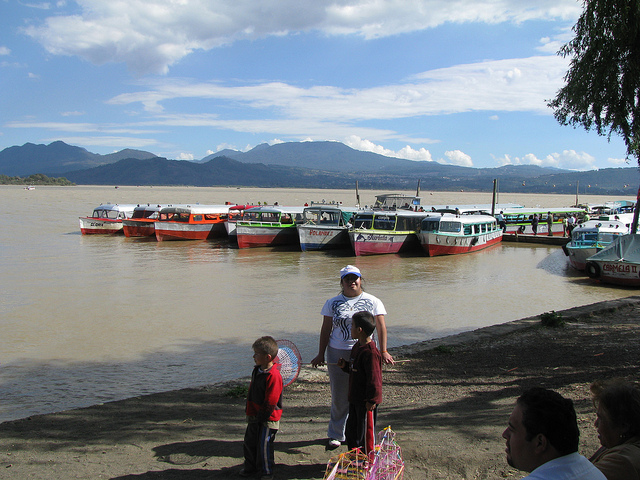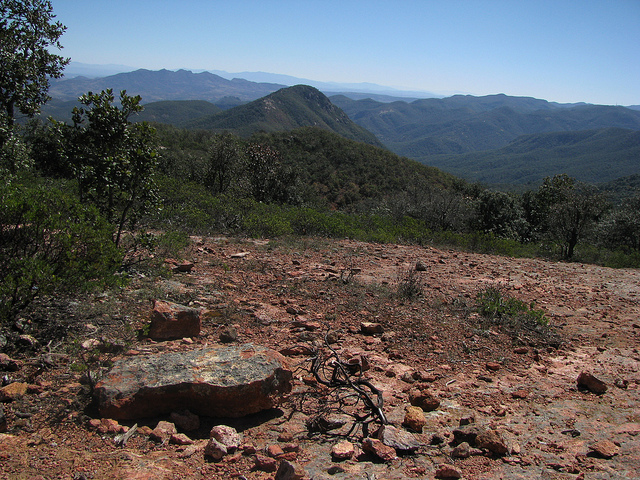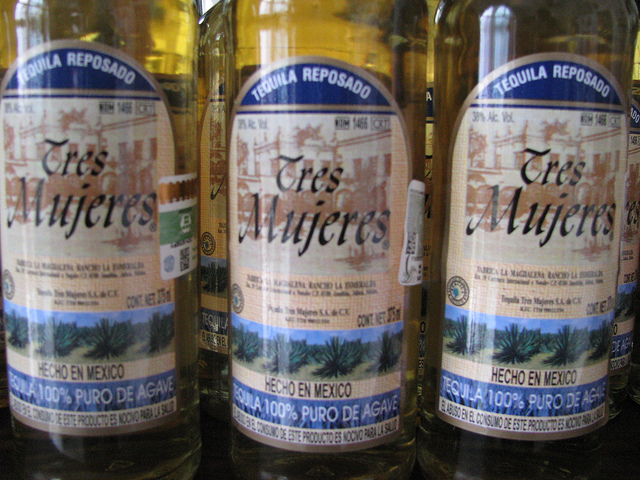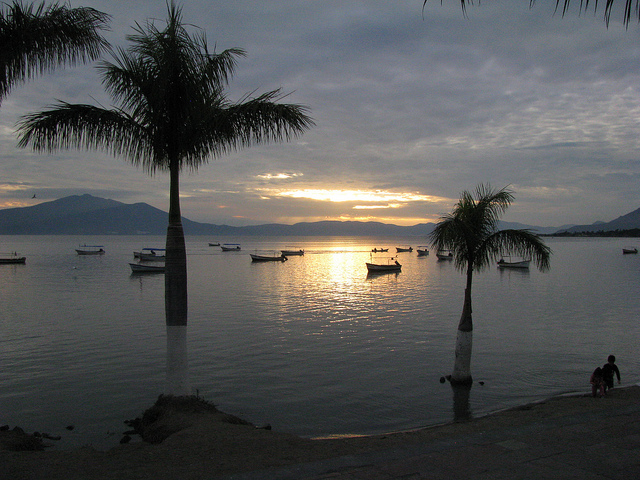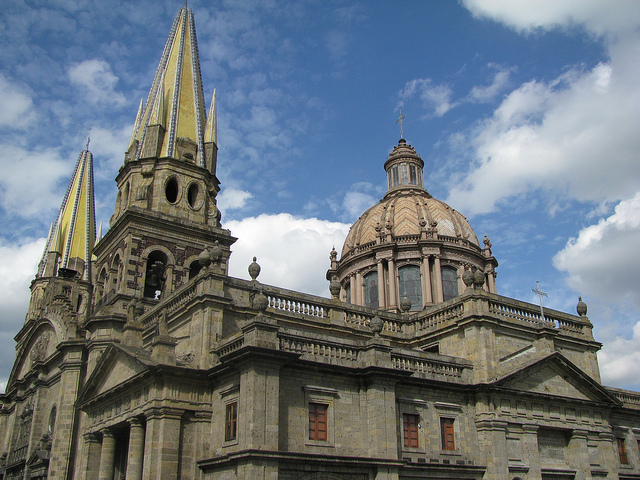After our interesting visit in Quiroga, a colourful market town less than half an hour from Morelia, we had now arrived in Tzintzuntzan, literally translated “the place of the hummingbird”. This historic town is the location of an important archeological site with a ceremonial centre on the side of a hill overlooking Lake Pátzcuaro. We stopped downtown at the market where typical local handicrafts were for sale. Characteristically coloured green local pottery, handmade straw decorations, scarves and many other traditional hand-made items make this a popular destination for many Mexican tourists.

The typical green pottery of Tzintzuntzan
Rodrigo explained that the typical green and brown pottery from Tzintzuntzan is great for cooking and his grandmother and mother have used these clay pots for generations. Little baby fish called “charales” were on sale in little paper bags. Typical Mexican spicy tamarind jelly was also available. Long straw chains in different colours were reminiscent of Christmas garlands. Native women were selling a variety of medicinal herbs and incense, and the market was a bustling centre of activity.

Religious items made of straw
From the market we entered the Monastery of San Francisco which was founded in the 16th century. Construction originally started in 1830 and now includes the church of “Nuestro Señor del Rescate” (our Lord of Rescue) where a mass was being celebrated. Around the corner is the Church of La Soledad whose main highlight is the “Santo Entierro” (holy burial), a wax figure of Jesus Christ that is displayed in a glass coffin. Locals believe that the arms and legs of this statue are still growing. The entire church was colourfully decorated for carnival and church goers were receiving an individual blessing after kneeling down in front of the altar.

The Church of La Soledad in Tzintzuntzan
On our way out of town we stopped at the cemetery. Throughout my travels I have found that cemeteries are always a unique expression of the art and mentality of a region, so I stopped to take some pictures of the ornately decorated graves. Our drive continued through a beautiful mountainous landscape. As we got closer to Lake Pátzcuaro, Rodrigo explained that due to agricultural activity, the lake’s water level has dropped a lot. Many of the green areas surrounding the lake were formerly covered by water.

The cemetery of Tzintzuntzan
We parked on the lakeshore and strolled through a small market area to the docks where the local ferries depart for Janitzio Island. Many people were enjoying picnics on the grassy strip of land that was leading up to the ferry docks. Local vendors came walking through the boat to sell peanuts and home-made potato chips. On this day, I was entirely surrounded by local people and did not see any foreign tourists in the crowd.

The ferry dock to Janitzio
The boat departed from the mainland and it took about 25 minutes to reach the island through brown and muddy waters. The island of Janitzio rises up like a perfect rounded cone from the water and its most well-known crowning icon, the 40 metre high statue of José Maria Morelos, can be seen from far away.

The island of Janitzio
